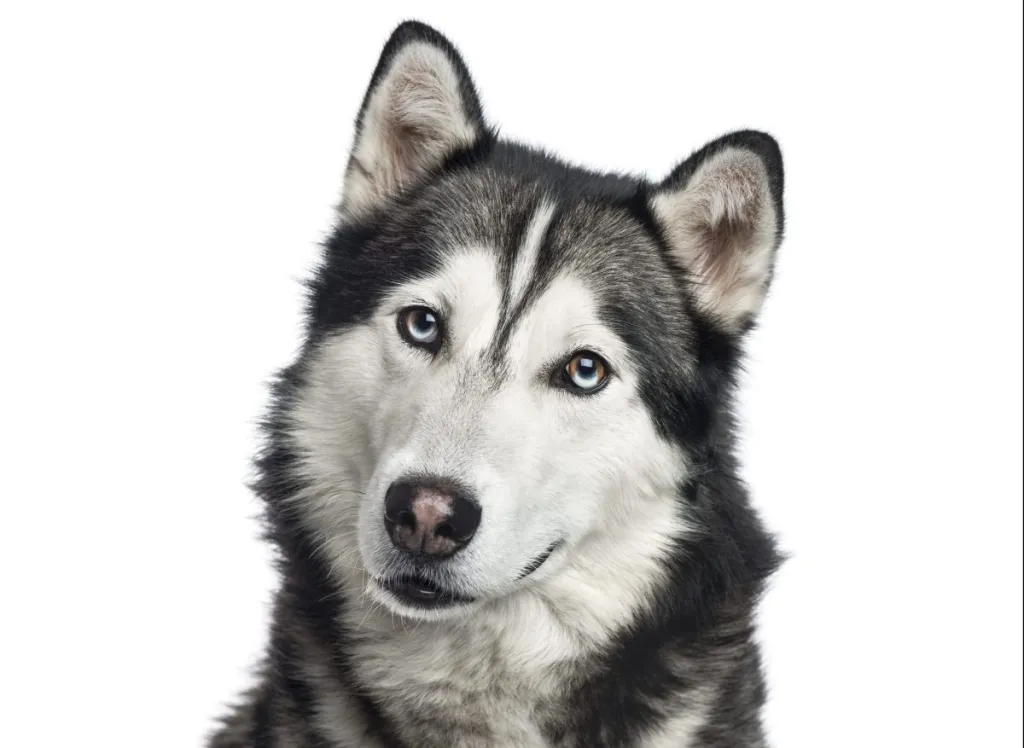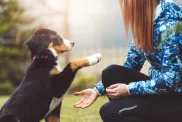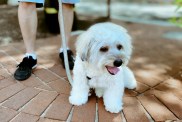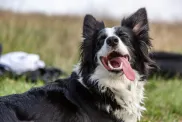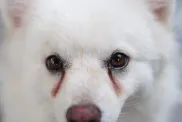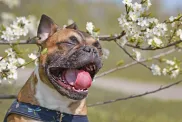The Siberian Husky dog breed has a beautiful, thick coat that comes in a multitude of colors and markings. Their blue or multi-colored eyes and striking facial masks only add to the appeal of this breed, which originated in Siberia.
It is easy to see why many are drawn to the Siberian’s wolf-like looks, but beware because this athletic, intelligent dog can act independently and challenge first-time dog parents. Huskies also put the “H” in Houdini and need a yard with a high fence that goes all the way into the ground to prevent escapes. Giving your Husky enough exercise may prove easier said than done; though, it’ll reduce boredom and unwanted behaviors, like escape attempts.
Siberian Huskies are pack animals, so they need to be part of a family or group. They are very social dogs, and they love to be around people. Siberian huskies are also very intelligent, and they enjoy learning new things.
Quick Facts
- Origin: Siberia, Russia
- Size: Medium to large, typically weighing around 35-60 pounds (16-27 kg) for females and 45-70 pounds (20-32 kg) for males.
- Lifespan: 12-14 years
- Coat: Thick double coat designed for cold weather. Colors vary widely and include combinations of black, white, gray, red, and more.
- Temperament: Siberian Huskies are known for their friendly and outgoing nature. They are intelligent, independent, and can have a mischievous streak. They usually get along well with people and other dogs.
- Exercise Needs: They have high energy levels and require plenty of exercise. Huskies are known for their endurance and love for activities like running, hiking, and pulling sleds.
- Training: Huskies are intelligent but can be stubborn. Early socialization and consistent, positive reinforcement training are important. Keep in mind their independent nature.
- Grooming: They have a heavy shedding coat, particularly during shedding seasons. Regular brushing helps manage shedding, and extra attention might be needed during shedding periods.
- Health: Siberian Huskies are generally a healthy breed, but they can be prone to certain conditions like hip dysplasia and eye issues. Regular exercise and a well-balanced diet are essential for their overall health.
- Pop Culture: What dog breed is Everest in PAW Patrol? A Siberian Husky, of course! The most famous Siberian Husky is Balto, who became a national hero by delivering life-saving diphtheria antitoxins to Nome, Alaska. Balto’s statue stands in Central Park in Manhattan.
RELATED: Siberian Husky Puppies: Cute Pictures & Facts
Siberian Husky Pictures
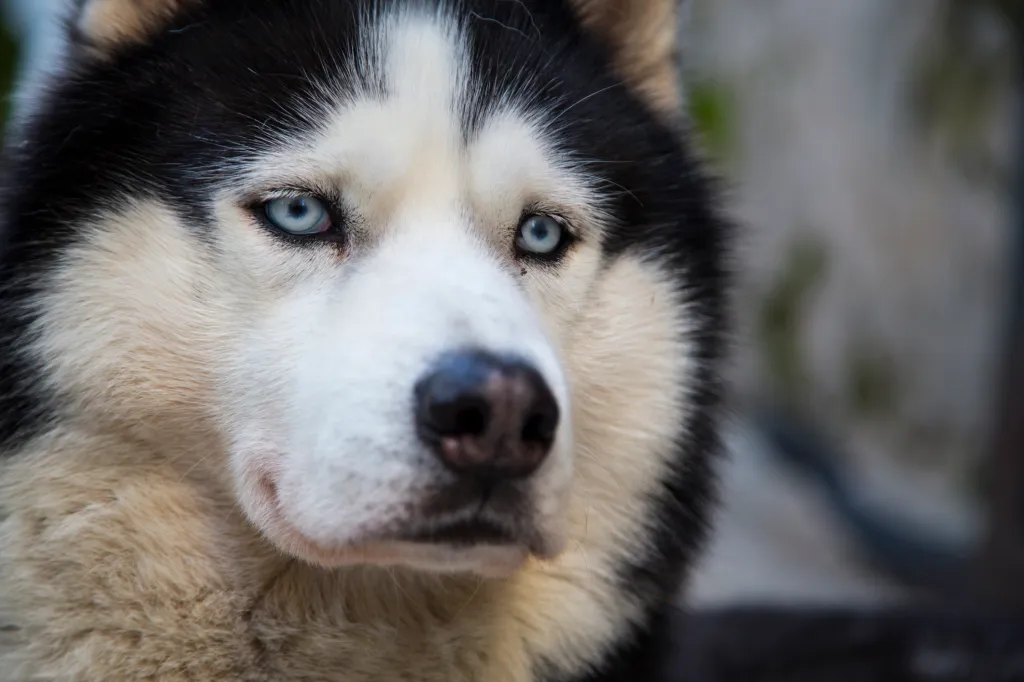
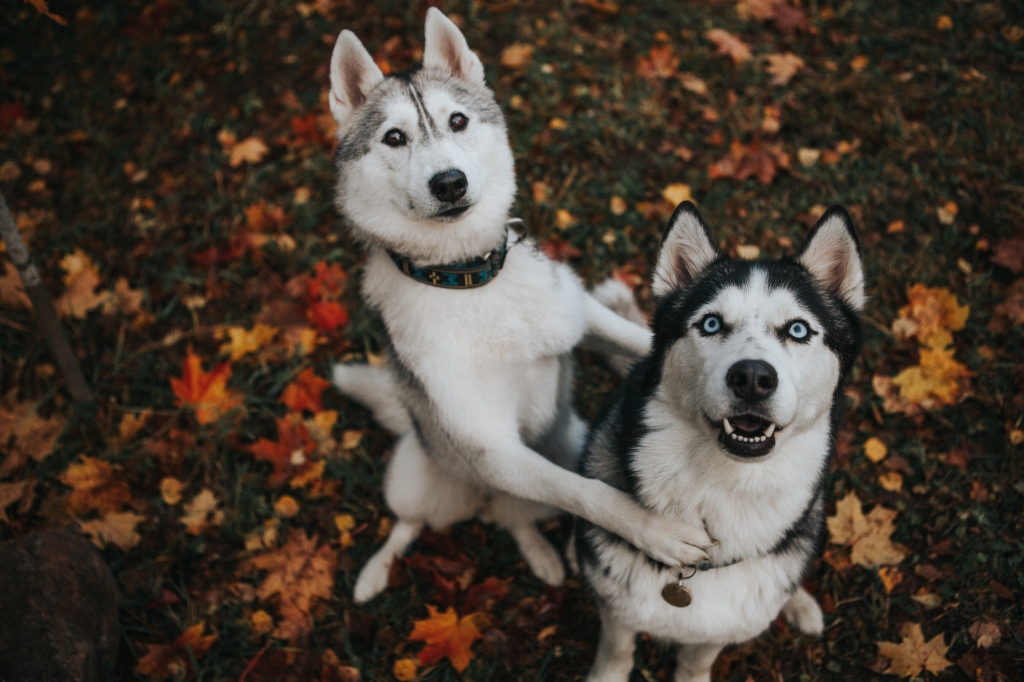
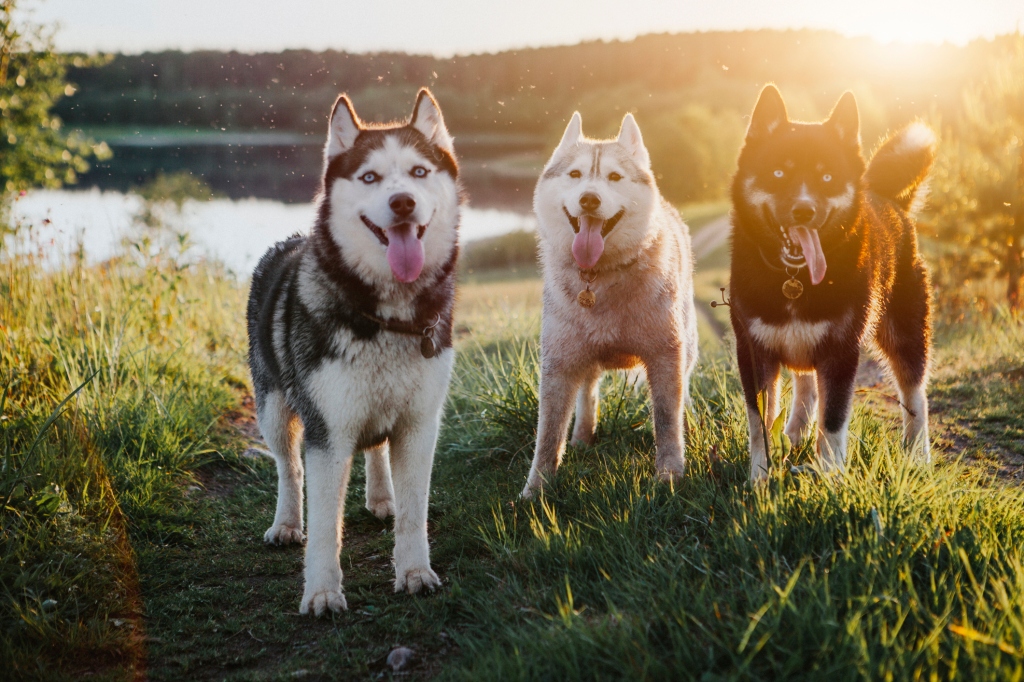
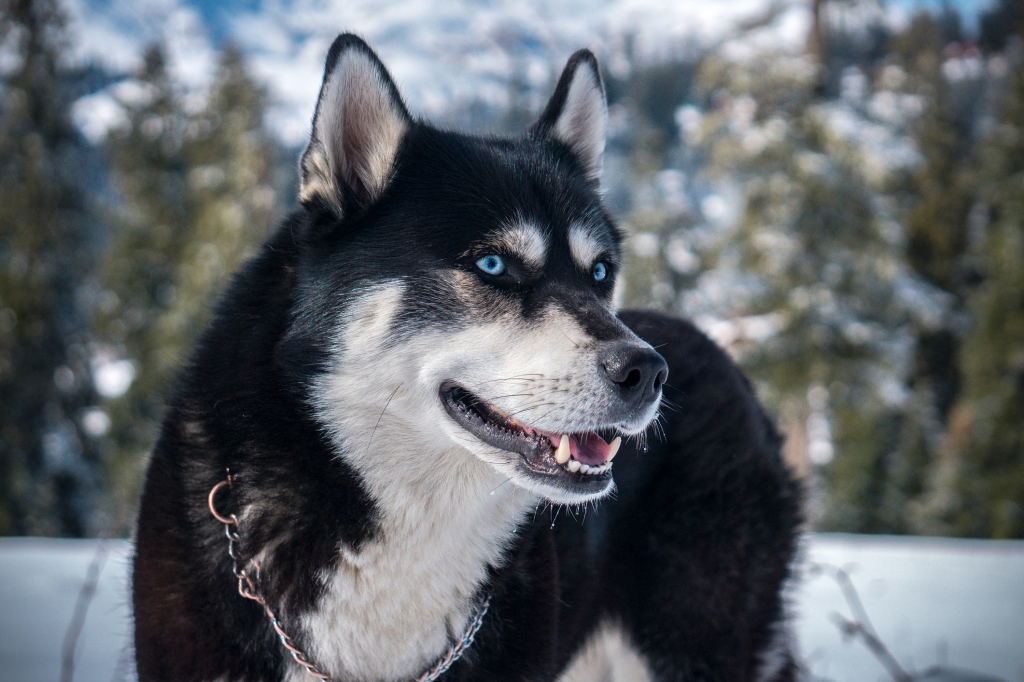
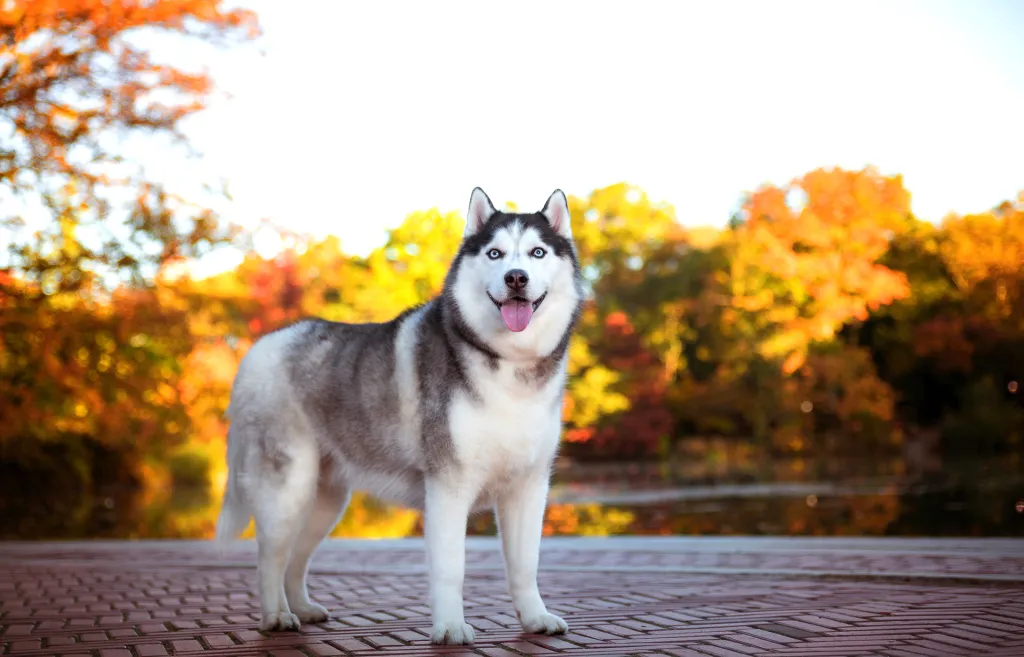
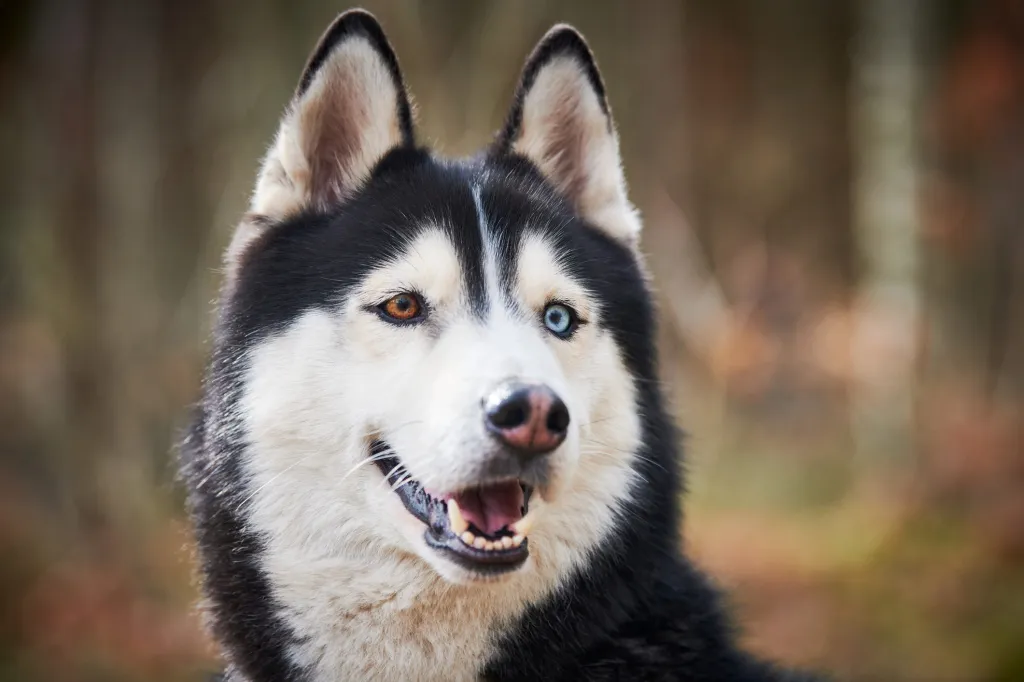
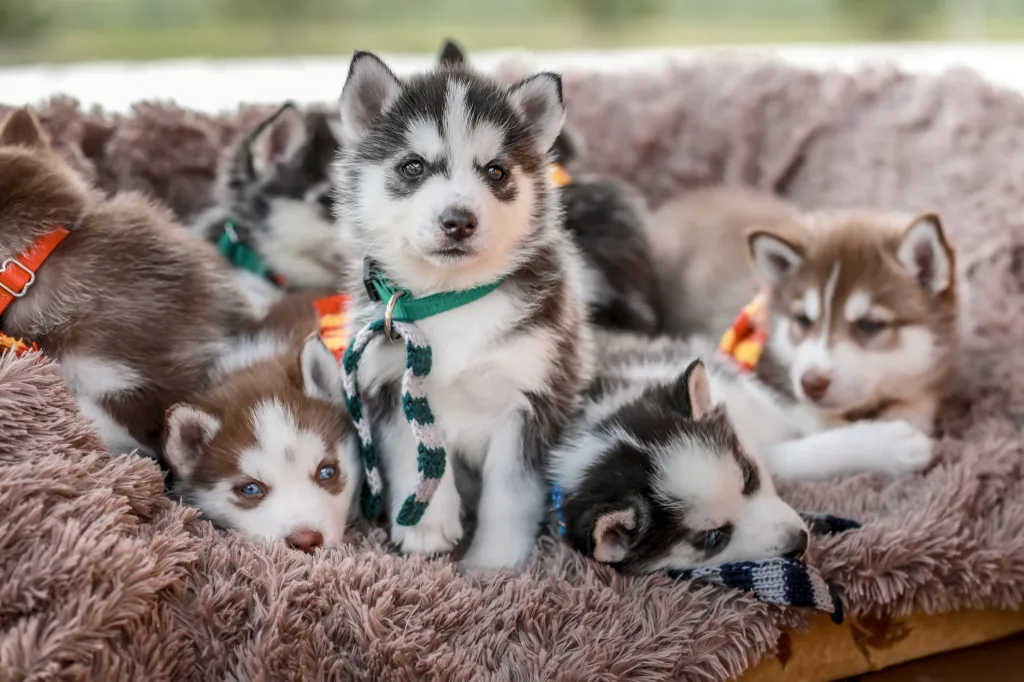
Adaptability
-
Adapts Well To Apartment Living
Looking for the best dog for your apartment? Contrary to popular belief, the suitability of dogs who adapt well to apartment living goes beyond its size. Apartment dwellers have a myriad of dog breeds to choose from as potential companions, with various factors to consider. Some large breeds can adapt well to apartment living and have lower activity levels. Others may require more space and possess higher energy levels. On the other hand, certain small dog breeds with abundant energy can still find contentment with indoor playtime or brisk walks.
However, when selecting a dog that adapts well apartments, it is essential to prioritize your neighbors. Opting for a pet that doesn’t excessively bark and behaves politely when encountering others in shared spaces like is crucial for maintaining a harmonious apartment environment.
In high-rise settings, it’s worth noting that numerous small dogs may exhibit a propensity for high energy and frequent barking. This makes them less suitable for apartment living. Therefore, desirable qualities in an apartment dog encompass being quiet, low-energy, and displaying polite behavior towards other residents.
Factors To Consider When Choosing A Dog For An Apartment
When considering dogs that adapt well to apartments, size alone should not be the sole determinant. Apartment dwellers have a wealth of dog breeds to choose from as potential furry companions. It’s important to remember that the size of your living space is just one factor to consider. While some larger breeds can adapt well to apartment living, with lower, others may require more space and have higher energy levels, making them less suitable for smaller apartments. Conversely, certain small dog breeds with higher energy levels can still thrive in apartments, finding contentment through indoor playtime or brisk walks. However, it is crucial to consider your neighbors’ comfort when selecting a dog. Opt for a pet that doesn’t bark excessively and behaves politely when interacting with others in shared spaces.
Therefore, it’s important to prioritize qualities such as being quiet, low-energy, calm indoors, and exhibiting good manners when living in close proximity to other residents. By considering these factors, you can find a dog that will adapt well to apartment living and create a harmonious living environment for everyone involved.
-
Good For Novice Owners
Some dogs are simply easier than others; they take to training better and are fairly easygoing. They’re also resilient enough to bounce back from your mistakes or inconsistencies.
Dogs who are highly sensitive, independent thinking, or assertive may be harder for a first-time dog parent to manage. You’ll get your best match if you take your dog-owning experience into account as you choose your new pooch.
If you’re new to dog parenting, take a look at 101 Dog Tricks and read up on how to train your dog!
-
Sensitivity Level
Some dogs will let a stern reprimand roll off their backs, while others take even a dirty look to heart. Low-sensitivity dogs, also called “easygoing,” “tolerant,” “resilient,” and even “thick-skinned,” can better handle a noisy, chaotic household, a louder or more assertive owner, and an inconsistent or variable routine. Do you have young kids, throw lots of dinner parties, play in a garage band, or lead a hectic life? Go with a low-sensitivity dog.
-
Tolerates Being Alone
Some breeds bond very closely with their family and are more prone to worry or even panic when left alone by their owner. An anxious dog can be very destructive–barking, whining, chewing, and otherwise causing mayhem. These breeds do best when a family member is home during the day or if you can take the dog to work.
-
Tolerates Cold Weather
Breeds with very short coats and little or no undercoat or body fat, such as Greyhounds, are vulnerable to the cold. Dogs with a low cold tolerance need to live inside in cool climates and should have a jacket or sweater for chilly walks. You can find a great jacket for your dog here!
-
Tolerates Hot Weather
Dogs with thick, double coats are more vulnerable to overheating. So are breeds with short noses, like Bulldogs or Pugs, since they can’t pant as well to cool themselves off. If you want a heat-sensitive breed, your dog will need to stay indoors with you on warm or humid days, and you’ll need to be extra cautious about exercising your dog in the heat.
All-around friendliness
-
Affectionate With Family
When it comes to unconditional love and unwavering loyalty, few animals can rival the affectionate nature of dogs. These remarkable creatures have earned their reputation as man’s best friend, and many breeds are particularly renowned for their love and devotion to their families. With their warm hearts and wagging tails, affectionate family dogs enrich the lives of their owners in countless ways.
One such breed known for its affectionate demeanor is the Golden Retriever. With their gentle temperament and friendly disposition, Golden Retrievers form deep bonds with their families. They eagerly participate in family activities, whether it’s a game of fetch in the yard or cuddling on the couch during a movie night. Their expressive eyes and ever-wagging tails are a testament to the joy they feel in the presence of their loved ones.
Another family-favorite breed is the Labrador Retriever. Renowned for their playful and patient nature, Labradors are excellent companions for children and adults alike. They readily engage in playtime with the kids, showcasing their boundless energy and enthusiasm. But when the day winds down, they seamlessly transition into loving and gentle cuddle buddies, comforting their family members with their warm presence.
Beyond specific breeds, mixed-breed dogs also have a special place in the hearts of families seeking affectionate companions. The shelter dogs, in particular, form deep connections with their adoptive families. They seem to understand the second chance they’ve been given and repay it with endless love and gratitude.
How To Know If A Dog Is Good With Families
The affectionate nature of family dogs extends beyond play and cuddles. Dogs have a remarkable ability to sense their owner’s emotions, offering comfort and support during difficult times. Whether it’s a wagging tail after a long day at work or a sympathetic nuzzle during moments of sadness, they prove time and again that they are attuned to their family’s needs.
It is important to note that not all dogs of the same breed will be equally affectionate. Some dogs may be more independent or aloof, while others may be more clingy or demanding of attention. The best way to find out how affectionate a dog is is to meet them in person and interact with them.
-
Kid-Friendly
Being gentle with children, sturdy enough to handle the heavy-handed pets and hugs they can dish out, and having a blasé attitude toward running, screaming children are all traits that make a kid-friendly dog. You may be surprised by who’s on that list: Fierce-looking Boxers are considered good with children, as are American Staffordshire Terriers (which are considered Pit Bulls). Small, delicate, and potentially snappy dogs such as Chihuahuas aren’t always so family-friendly.
**All dogs are individuals. Our ratings are generalizations, and they’re not a guarantee of how any breed or individual dog will behave. Dogs from any breed can be good with children based on their past experiences, training on how to get along with kids, and personality. No matter what the breed or breed type, all dogs have strong jaws, sharp pointy teeth, and may bite in stressful circumstances. Young children and dogs of any breed should always be supervised by an adult and never left alone together, period.
-
Dog Friendly
Friendliness toward dogs and friendliness toward humans are two completely different things. Some dogs may attack or try to dominate other dogs, even if they’re love-bugs with people; others would rather play than fight; and some will turn tail and run. Breed isn’t the only factor. Dogs who lived with their littermates and mother until at least six to eight weeks of age and who spent lots of time playing with other dogs during puppyhood, are more likely to have good canine social skills.
-
Friendly Toward Strangers
Stranger-friendly dogs will greet guests with wagging tails and nuzzles; others are shy, indifferent, or even aggressive. However, no matter what the breed, a dog who was socialized and exposed to lots of different types, ages, sizes, and shapes of people as a puppy will respond better to strangers as an adult. Remember that even friendly dogs should stay on a good, strong leash like this one in public!
Health And Grooming Needs
-
Amount Of Shedding
If you’re going to share your home with a dog, you’ll need to deal with some level of dog hair on your clothes and in your house. However, shedding does vary greatly among the breeds. Some dogs shed year-round, some “blow” seasonally, some do both, and some shed hardly at all. If you’re a neatnik, you’ll need to either pick a low-shedding breed or relax your standards. To help keep your home a little cleaner, you can find a great de-shedding tool here!
-
Drooling Potential
Drool-prone dogs may drape ropes of slobber on your arm and leave big, wet spots on your clothes when they come over to say hello. If you’ve got a laid-back attitude toward slobber, fine; but if you’re a neatnik, you may want to choose a dog who rates low in the drool department.
-
Easy To Groom
Some breeds are brush-and-go dogs; others require regular bathing, clipping, and other grooming just to stay clean and healthy. Consider whether you have the time and patience for a dog who needs a lot of grooming, or the money to pay someone else to do it.
-
General Health
Due to poor breeding practices, some breeds are prone to certain genetic health problems, such as hip dysplasia. This doesn’t mean that every dog of that breed will develop those diseases; it just means that they’re at an increased risk.
If you’re adopting a puppy, it’s a good idea to find out which genetic illnesses are common to the breed you’re interested in. You may also want to ask if your shelter or rescue has information about the physical health of your potential pup’s parents and other relatives.
-
Potential For Weight Gain
Some breeds have hearty appetites and tend to put on weight easily. As in humans, being overweight can cause health problems in dogs. If you pick a breed that’s prone to packing on pounds, you’ll need to limit treats, make sure they get enough exercise, and measure out their daily food servings into regular meals rather than leaving food out all the time.
Ask your vet about your dog’s diet and what they recommend for feeding your pooch to keep them at a healthy weight. Weight gain can lead to other health issues or worsen problems like arthritis.
-
Size
Get ready to meet the giants of the doggy world! Large dog breeds aren’t just big balls of fluff, they’re like loving, oversized teddy bears on a mission to steal your heart. Need some convincing? Let’s dive into the awesome benefits of owning one!
First things first, these pooches are a living security system! With their impressive size and thunderous barks, they’ll have any would-be intruder running for the hills. Talk about peace of mind! Plus, who needs an alarm when you’ve got a furry giant protecting your castle?
But that’s not all. Large dog breeds are all about loyalty and devotion. They’ll stick by your side through thick and thin, becoming your most dedicated bestie. Their love knows no bounds! When you have a giant fluffball showing you unconditional love, you’ll feel like the luckiest human on the planet.
Now, let’s talk about their talents. These big fellas are the ultimate working partners. With brains and brawn, they’re up for any challenge. From search and rescue missions to lending a helping paw to those in need, these dogs are superheroes in fur coats. They’ll make you proud every step of the way!
Don’t let their size fool you—these gentle giants have hearts as big as their paws. They’re incredible with kids and other pets, spreading their love like confetti. Their patience and kindness make them perfect family pets, ensuring harmony in your household.
Oh, and get ready to break a sweat! These dogs are fitness enthusiasts, and they’ll keep you on your toes. Daily walks, jogs, and play sessions will not only keep them happy and healthy but will also give you a reason to ditch the couch and join in on the fun. It’s a win-win situation!
So, if you’re ready for a dose of big love, go ahead and consider a large dog breed. They’re the best wing-dog you could ever ask for, ready to make your life a thousand times more exciting, loving, and downright awesome! Get ready for the big adventure of a lifetime!
Trainability
-
Easy To Train
Easy-to-train dogs are more adept at forming an association between a prompt (such as the word “sit”), an action (sitting), and a consequence (getting a treat) very quickly. Other dogs need more time, patience, and repetition during training.
Many breeds are intelligent but approach training with a “What’s in it for me?” attitude, in which case you’ll need to use rewards and games to teach them to want to comply with your requests.
Related:
10 Fun, Impressive Tricks You Can Teach Any Dog
-
Intelligence
Dogs who were bred for jobs that require decision making, intelligence, and concentration, such as herding livestock, need to exercise their brains, just as dogs who were bred to run all day need to exercise their bodies. If they don’t get the mental stimulation they need, they’ll make their own work–usually with projects you won’t like, such as digging and chewing. Obedience training and interactive dog toys are good ways to give a dog a brain workout, as are dog sports and careers, such as agility and search and rescue.
-
Potential For Mouthiness
Common in most breeds during puppyhood and in Retriever breeds at all ages, mouthiness means a tendency to nip, chew, and play-bite (a soft, fairly painless bite that doesn’t puncture the skin). Mouthy dogs are more likely to use their mouths to hold or “herd” their human family members, and they need training to learn that it’s fine to gnaw on chew toys, but not on people. Mouthy breeds tend to really enjoy a game of fetch, as well as a good chew on a toy that’s been stuffed with kibble and treats.
-
Prey Drive
Dogs with a high prey drive have an instinctive desire to stalk, capture, and prey upon potential food sources. Dogs who were bred to hunt, such as Terriers, have an inborn desire to chase — and sometimes kill — other animals. Anything whizzing by — such as cats, squirrels, and perhaps even cars — can trigger that instinct.
How to address a high prey drive
Off-leash adventures are too great a temptation for pups who will wander and hunt. Dogs who like to chase need to be leashed. And, even on a leash, you may experience your dog pulling on the leash to reach rodents or birds in their sight. Otherwise, these pups should be kept in a fenced area when outdoors. If your pup has a high prey drive, you’ll need a high, secure fence in your yard.
These breeds generally aren’t a good fit for homes with smaller pets that can look like prey, such as cats, hamsters, or small dogs. Breeds that were originally used for bird hunting, on the other hand, generally won’t chase, but you’ll probably have a hard time getting their attention when there are birds flying by.
Other behavioral concerns
Observing your dog’s prey drive, which is instinctual and biologically-rooted, is not the same as observing aggression. Much aggression is born of fear and anxiety, especially in the case of dog aggression toward humans.
The tendency to wander, even into oncoming traffic, can produce diasterious results for pups with predatory instincts. It can also lead to pups being bitten by snakes or attacked by other wild animals they may pursue while on the hunt.
-
Tendency To Bark Or Howl
Some breeds sound off more often than others. When choosing a breed, think about how often the dog vocalizes. Learn more about breeds with a tendency to bark or howl.
If you’re considering a hound, would you find their trademark howls musical or maddening? If you’re considering a watchdog, will a city full of suspicious “strangers” put your pup on permanent alert? Will the local wildlife literally drive your dog wild? Do you live in housing with noise restrictions? Do you have neighbors nearby? Then you may wish to choose a quieter dog.
-
Wanderlust Potential
Some breeds are more free-spirited than others. Nordic dogs such as Siberian Huskies were bred to range long distances, and given the chance, they’ll take off after anything that catches their interest. And many hounds simply must follow their noses–or that bunny that just ran across the path–even if it means leaving you behind.
Exercise needs
-
Energy Level
High-energy dogs are always ready and waiting for action. Originally bred to perform a canine job of some sort, such as retrieving game for hunters or herding livestock, they have the stamina to put in a full workday. They need a significant amount of exercise and mental stimulation, and they’re more likely to spend time jumping, playing, and investigating any new sights and smells.
Low-energy dogs are the canine equivalent of a couch potato, content to doze the day away. When picking a breed, consider your own activity level and lifestyle, and think about whether you’ll find a frisky, energetic dog invigorating or annoying.
-
Intensity
A vigorous dog may or may not have high energy, but everything they do, they do with vigor: they strain on the leash (until you train them not to), try to plow through obstacles, and even eats and drinks with great big gulps. These dynamos need lots of training to learn good manners, and may not be the best fit for a home with young kids or someone who’s elderly or frail. A low-vigor dog, on the other hand, has a more subdued approach to life.
-
Exercise Needs
Some breeds do fine with a slow evening stroll around the block. Others need daily, vigorous exercise, especially those that were originally bred for physically demanding jobs, like herding or hunting.
Without enough exercise, these breeds may put on weight and vent their pent-up energy in ways you don’t like, such as barking, chewing, and digging. Breeds that need a lot of exercise are good for outdoorsy, active people, or those interested in training their dog to compete in a high-energy dog sport, such as agility.
-
Potential For Playfulness
Some dogs are perpetual puppies — always begging for a game — while others are more serious and sedate. Although a playful pup sounds endearing, consider how many games of fetch or tag you want to play each day, and whether you have kids or other dogs who can stand in as playmates for the dog.
Siberian Husky Overview
Siberian Huskies were originally bred by the Chukchi people of Siberia to help them hunt and pull sleds. They are known for their friendly and outgoing personalities, and they are also intelligent and easy to train. Siberian Huskies are bred to pull sleds, so they need plenty of exercise. They are not good guard dogs, as they are too friendly with strangers.
If you are thinking about getting a Siberian Husky, be sure to do your research to make sure that they are the right breed for you. They are a high-energy breed that needs plenty of exercise, so they are not a good fit for everyone. However, if you are looking for a friendly, intelligent, and outgoing dog, then a Siberian Husky may be the perfect breed for you.
Here are some additional things to keep in mind if you are considering getting a Siberian Husky:
- They are escape artists, so you will need to have a secure yard or make sure they are always on a leash when outside.
- They are vocal dogs, and they will often howl.
- They are not hypoallergenic, so they will shed a lot.
If you are willing to put in the time and effort, a Siberian Husky can be a wonderful companion. They are loyal, loving, and always up for an adventure.
Siberian Husky Highlights
-
Siberian Huskies are generally low shedders in most climates, but they do “blow their coat” twice a year, shedding large amounts of hair at once, which can increase in warmer climates. During this three-week period, they become heavy shedders.
While not recommended for apartment living, some Huskies can do well in apartments with proper training and exercise.
These dogs are known escape artists, capable of jumping fences, breaking tie-out chains, and slipping collars. To prevent them from escaping, a high fenced yard with a buried fence is necessary.
Siberian Huskies can be destructive both indoors and outdoors, so it’s essential to provide them with a designated digging area in the yard.
Although they enjoy howling, Huskies rarely bark, making them unsuitable as watchdogs. They are more likely to be friendly with strangers than aggressive.
Huskies require a strong and experienced owner who can establish an alpha position in the home. Obedience training from a young age is crucial, but it can be challenging due to their stubborn nature.
Their curiosity can lead them into dangerous situations, so supervision is essential when exploring new things.
Despite being affectionate and good-natured, young children should not be left alone with any breed. Huskies generally get along well with children and other dogs.
Siberian Huskies were bred to survive on minimal food, and even today, they don’t require a high-calorie diet. It’s best to follow the breeder’s advice on feeding portions.
Huskies must be kept on a leash during walks, as they have a tendency to run off and chase small animals.
Unfortunately, many people purchase Huskies solely for their beauty without considering their temperament and quirks. This has led to many dogs being lost, abandoned, or surrendered to shelters. Prospective owners should educate themselves about the breed and consider adoption or fostering before deciding to bring a Husky into their lives.
To ensure a healthy dog, it’s important to avoid buying from irresponsible breeders, puppy mills, or pet stores. Look for reputable breeders who test their dogs for genetic diseases and prioritize sound temperaments.
Siberian Husky History
The Siberian Husky is believed to have originated among the Chukchi, a tribe of Siberian nomads. DNA tests confirm that they are among the oldest of dog breeds. The Chukchi used the dogs as fast transportation and as family companions. Huskies often slept with the children and provided them with warm, comfortable beds.
In 1908, Siberian Huskies were imported to Alaska and used as sled dogs during the gold rush. They were also used in the All-Alaska Sweepstakes, a 408-mile dogsled race. The breed continued to thrive in North America, even after the Soviet government closed the borders to Siberia in 1930. Although the Siberian Husky changed slightly from its Siberian foundation dogs, the Chukchi Sled Dog, it still maintains many of the wonderful qualities of that breed.
Siberian Husky Size
Siberian Huskies are medium-sized dogs, standing 20 to 24 inches tall at the withers and weighing 35 to 60 pounds. Males are typically larger than females.
Siberian Husky Personality
Siberian Huskies are pack dogs, and they need an owner who is the clear leader of the pack. This makes training easier because you will find that your dog respects you, but don’t be surprised if he tests the limits of your position in the pack and tries to take control from time to time. When this happens, it’s important not to give into their pushiness. Assert yourself as leader — not by bullying or hitting — but by confirming the ground rules with clarity and consistency.
Making your dog wait to eat is one of the best ways to establish your leadership role. The Husky will view you as the keeper of all valuable resources — food, treats, toys and other canine assets. This high-energy breed can be destructive both indoors and out — especially when bored or not given adequate exercise. They will demolish a house if they are left alone and there has even been a case of a Siberian Husky chewing through a cement wall.
They will dig up flower gardens and yards alike, but they can be trained to dig in a specific spot in the yard. It is better for everyone if you merely teach your dog to dig in one spot instead of trying to break him of that habit. Nonetheless, they can be quite charming with their mischievous and playful nature.
They are also quite social and love to show off their talents. Siberian Huskies do not bark — that’s the good news. Here’s the bad: they do enjoy howling, which can be very frustrating for your neighbors. Unless you have a properly trained and well-exercised Siberian Husky, they do not make ideal pets for apartments.
Another caution: although Huskies are adored for being friendly and gentle, they make lousy watchdogs. Unfortunately, they are not overly suspicious of strangers, including burglars. The fact is that they tend to love everybody. Temperament doesn’t occur in a vacuum. It’s affected by a number of factors, including heredity, training, and socialization. Puppies with nice temperaments are curious and playful, willing to approach people and be held by them. Choose the middle-of-the-road puppy, not the one who’s beating up his littermates or the one who’s hiding in the corner.
Always meet at least one of the parents — usually the mother is the one who’s available — to ensure that they have nice temperaments that you’re comfortable with. Meeting siblings or other relatives of the parents is also helpful for evaluating what a puppy will be like when he grows up. Like every dog, Siberian Huskies need early exposure to many different people, sights, sounds, and experiences when they’re young. Socialization helps ensure that your Siberian puppy grows up to be a well-rounded dog.
Enrolling him in a puppy kindergarten class is a great start. Inviting visitors over regularly, and taking him to busy parks, stores that allow dogs, and on leisurely strolls to meet neighbors will also help him polish his social skills.
Siberian Husky Health
Huskies are generally healthy, but like all breeds, they’re prone to certain health conditions. Not all Huskies will get any or all of these diseases, but it’s important to be aware of them if you’re considering this breed. If you’re buying a puppy, find a good breeder who will show you health clearances for both your puppy’s parents. Health clearances prove that a dog has been tested for and cleared of a particular condition. In Huskies, you should expect to see health clearances from the Orthopedic Foundation for Animals (OFA) for hip dysplasia (with a score of fair or better), elbow dysplasia, hypothyroidism, and von Willebrand’s disease; from Auburn University for thrombopathia; and from the Canine Eye Registry Foundation (CERF) certifying that eyes are normal. You can confirm health clearances by checking the OFA web site (offa.org).
- Cataracts: A cataract is an opacity on the lens of the eye that causes difficulty in seeing. The eye(s) of the dog will have a cloudy appearance. Cataracts usually occur in old age and sometimes can be surgically removed to improve the dog’s vision.
- Corneal Dystrophy: This condition affects the cornea or outer transparent portion of the eyeball. It is an opacity that is caused by a collection of lipids in the cornea. It is usually seen in young adults and it generally affects more females. There is no therapy for this condition, but it does not seem to affect the vision.
- Progressive Retinal Atrophy (PRA): This is a degenerative eye disorder that eventually causes blindness from the loss of photoreceptors at the back of the eye. PRA is detectable years before the dog shows any signs of blindness. Fortunately, dogs can use their other senses to compensate for blindness, and a blind dog can live a full and happy life. Just don’t make it a habit to move the furniture around. Reputable breeders have their dogs’ eyes certified annually by a veterinary ophthalmologist and do not breed dogs with this disease.
Regardless of how healthy your dog is when you first bring them home, you should prepare for any issues that may come up throughout their life. A pet insurance plan can help you stay ready for any of your dog’s veterinary needs.
Siberian Husky Care
Siberian Huskies need to be exercised 30 to 60 minutes daily to keep them from becoming bored. They make excellent jogging companions, but should not be exercised in hot weather. Surprisingly, they need only a small (but secure) backyard to expend their energy. Bottom line: Siberian Huskies need to be working to stay happy. Usually just maintaining your own active life through hiking and other outdoor sports will keep you Siberian Husky healthy, happy and out of trouble. As mentioned earlier, training is a must with this breed and you may want to invest in more advanced obedience classes.
\This can be difficult for many owners and trainers as the breed is very intelligent and will determine the difference between classes and home. They will behave wonderfully at class, following all instructions and commands, but at home they may revert back to the stubborn dog that stole your heart. This can be frustrating, but you will find that patience, time, and a little of your own stubbornness will pay off.
Crate training is an important tool that is often recommended by breeders. It keeps you dog and puppy safe and also gives them their own safe haven to retreat to when they are feeling overwhelmed or tired. A crate should never be used as a punishment.
Leash training is also a must as Siberian Huskies should never be left off leash when they are not in a fenced area. They love to run and will do so without any thought of how far away you are. You can easily lose your Siberian Husky if he decides to chase something or simply enjoy a heartfelt run. Siberian Huskies do have a high prey drive and that is another reason why they should be leashed during walks.
Siberian Husky Feeding
Recommended daily amount: 1.5 to 2 cups of high-quality dry food a day, divided into two meals. When it comes to meal times, Siberian Huskies are known for being “easy keepers” — requiring a relatively small amount of food for their size. This trait may be traced to the origins of the breed, as the Chukchis developed these dogs to pull a light load at a fast pace over great distances in low temperatures on the smallest possible intake of food. Note: How much your adult dog eats depends on his size, age, build, metabolism, and activity level.
Dogs are individuals, just like people, and they don’t all need the same amount of food. It almost goes without saying that a highly active dog will need more than a couch potato dog. The quality of dog food you buy also makes a difference — the better the dog food, the further it will go toward nourishing your dog and the less of it you’ll need to shake into your dog’s bowl. For more on feeding your Husky, see our guidelines for buying the right food, feeding your puppy, and feeding your adult dog.
Siberian Husky Coat Color And Grooming
Make sure your vacuum cleaner is in top working order and you book time regularly to groom if you adopt a Siberian Husky. His double coat features medium-length hair. The top coat is straight and the undercoat feels soft and dense. Expect lots of hair, lots of shedding — especially during spring and fall when they blow their coats. That said, this is a fairly easy breed to care for. Siberian Huskies living in cooler temperatures tend to shed less than those who live in warmer climates.
You can avoid matting — and excess hair on your furniture — if you commit to brushing your dog’s coat at least once a week during the year — and daily during shedding season. Siberian Huskies are clean dogs and will take the time to clean themselves — much like a cat will. They don’t typically emit “doggy” odor and rarely need baths. Unless, of course, they wiggle in something disgusting in the backyard or find a stinky body of water to jump in.
When it is bath time, select a high-quality dog shampoo designed to keep the natural oils in your dog’s skin and coat. Huskies come in a variety of colors and markings, from black to pure white with colored markings on the body that include reds and coppers. Their eyes can be brown, blue, or a combination. Their faces sport masks that add to their eye appeal. Brush your Husky’s teeth at least two or three times a week to remove tartar buildup and the bacteria that lurk inside it.
Daily brushing is even better if you want to prevent gum disease and bad breath. Trim their nails once or twice a month if your dog doesn’t wear them down naturally to prevent painful tears and other problems. If you can hear them clicking on the floor, they’re too long. Dog toenails have blood vessels in them, and if you cut too far you can cause bleeding — and your dog may not cooperate the next time he sees the nail clippers come out.
So, if you’re not experienced trimming dog nails, ask a vet or groomer for pointers. His ears should be checked weekly for redness or a bad odor, which can indicate an infection. When you check your dog’s ears, wipe them out with a cotton ball dampened with gentle, pH-balanced ear cleaner to help prevent infections.
Don’t insert anything into the ear canal; just clean the outer ear. Begin accustoming your Husky to being brushed and examined when he’s a puppy. Handle his paws frequently — dogs are touchy about their feet — and look inside his mouth. Make grooming a positive experience filled with praise and rewards, and you’ll lay the groundwork for easy veterinary exams and other handling when he’s an adult. As you groom, check for sores, rashes, or signs of infection such as redness, tenderness, or inflammation on the skin, in the nose, mouth, and eyes, and on the feet. Eyes should be clear, with no redness or discharge. Your careful weekly exam will help you spot potential health problems early.
Siberian Husky Children And Other Pets
Huskies make great pets for households with children. They can be very tolerant of children, but like all other dogs, should be supervised when around young children. Always teach children how to approach and touch dogs, and always supervise any interactions between dogs and young children to prevent any biting or ear or tail pulling on the part of either party. Teach your child never to approach any dog while he’s eating or to try to take the dog’s food away. No dog should ever be left unsupervised with a child.
Siberian Huskies do get along with other dogs but it is still important to take your puppy to socialization classes. This gets them used to other dogs and also to people, although they are also very affectionate to strangers. Socialization teaches puppies how to behave and greet other dogs and their owners. Keep in mind the history of this breed.
The harsh conditions in Siberia created a strong prey drive in this breed because food was often hard to find. As a result, many Huskies today maintain that prey drive toward small animals such as squirrels, rabbits, and cats. Some Huskies, however, thrive in multi-pet households, especially when they are raised with other pets from puppyhood.
Siberian Husky Rescue Groups
Siberian Huskies are often purchased without any clear understanding of what goes into owning one. There are many Huskies in need of adoption and or fostering. There are a number of rescues that we have not listed. If you don’t see a rescue listed for your area, contact the national breed club or a local breed club and they can point you toward a Husky rescue.
- Delaware Valley Siberian Husky Rescue
- MaPaw Siberian Husky Rescue & Referral Service, Inc.
- Seneca Siberian Husky Club
- Siberian Husky Club of Greater Cleveland
- Siberian Husky Rescue Site
All dogs will need veterinary care at some point in their lives. When you adopt, make sure you’re prepared to address any health issues that may come up after you leave the shelter. A pet insurance plan can keep your dog covered.
Siberian Husky Breed Organizations
Finding a reputable dog breeder is one of the most important decisions you will make when bringing a new dog into your life. Reputable breeders are committed to breeding healthy, well-socialized puppies that will make great companions. They will screen their breeding stock for health problems, socialize their puppies from a young age, and provide you with lifetime support.
On the other hand, backyard breeders are more interested in making a profit than in producing healthy, well-adjusted dogs. They may not screen their breeding stock for health problems, and they may not socialize their puppies properly. As a result, puppies from backyard breeders are more likely to have both health and behavioral issues.
